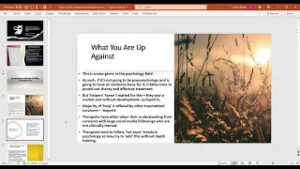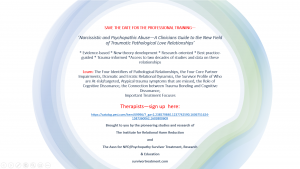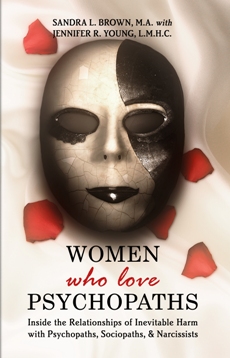By Jennifer Young, LMHC
In May, 2012, Vicki Bolling lay dying in her front yard, shot three times by her husband. The local news reports said that the death of Ms. Bolling was no surprise to her sons. According to news accounts, her sons reported that she suffered years of physical and emotional abuse that included threats, manipulation and intimidation. She was married for 30 years. Her son, John Stevenson, was quoted as saying “She is the only one in the world who could love a monster.” (Tampa Bay Times, May 10, 2012)
We know that she is not the only one…we know that loving a “monster” is possible. For women who love psychopaths, love and monster often exist in the same thought. The problem is, someone who has never been in the midst of this level of psychological trauma may not understand…they don’t understand why women stay…why women don’t see how bad he is. This lack of understanding of the power of pathology is killing women.
Domestic homicide is preventable. The mission of the Fatality Review Committee in Pinellas County, Florida is to convey that message. I am a member of that Committee and it is their responsibility to bring to the table members of the community who share a vested interest in uncovering patterns related to local domestic homicides. In the last 12+ years, the team has reviewed well over 100 cases. Cases are reviewed only after they have been finalized in the criminal justice system.
Domestic homicide, both locally and nationally, does not occur in a vacuum…there are warning signs and, in a community, there are trends. Our report, published in May 2012, outlines the seven trends in our community for domestic homicides.
- In 89% of cases there had been no contact with the local domestic violence center. Domestic homicide is preventable when victims reach out to domestic violence centers for safety and resources.
- In 89% of the cases there had been no referral to a batterer intervention program. Domestic homicide is preventable when perpetrators connect with batterer intervention programs and their underlying behaviors and beliefs are addressed.
- In 88% of cases there was a male perpetrator and a female victim. Domestic homicide is preventable when our society shifts to the belief that all people are of equal value and control over others is no longer the standard.
- In 85% of cases there was no injunction for protection filed. Domestic homicide is preventable when victims are encouraged to file injunctions for protection and have access to information and safety planning to assist in the process of leaving.
- In 76% of cases substance abuse was a contributing factor. Domestic homicide is preventable when those who have a substance abuse problem are assessed for issues related to violence, both perpetrators and victims.
- In 68% of the cases the perpetrator had a prior criminal history. Domestic homicide is preventable when criminal history is identified as a pattern of behavior and the information is made openly available to victims and during domestic violence court hearings.
- In 69% of the cases friends, family, coworkers and/or neighbors were aware of previous violence. Domestic homicide is preventable when everyone in the community takes a stand against violence; stop asking why she doesn’t leave and start asking what you can do to help her leave.
These trends mean something. A “trend” refers to the idea or awareness of repeated, connected events. It’s not a black and white predictor but rather a clue to a potential. Trends are used in many areas of our lives. Many follow financial trends or housing market trends; some look at trends related to medical issues and even trends in our environment. Those people who use trends take advantage of facts and information found in the reality of our lives…trends don’t rely on the maybes of the past but rather the truth that exists in the past.
What is powerful about trends is their ability to provide safeguards as well as hope. Trends help us connect missing pieces to prevent poor choices and they help us highlight information that will lead to improved choices. If we are open to it, they translate into the framework for prevention.
Prevention in the area of domestic homicide is risky. The risk comes because of the severity of getting it right or getting it wrong…human life is at stake. But I believe we must move through the risk. By “move through” I mean acknowledge it…learn from it and then see what follows. So, beyond acknowledging the risk lies a focus on prevention.
The trends that have come from our local review of domestic homicide highlight many areas that need more focus. The realities of these trends are not unlike acknowledging the realities of pathology. Identifying patterns of behavior in one person and accepting the reality of who they are can help prevent continued pain. We must begin to call it as it is…we must pay attention to the facts and the patterns of behavior.
So, what will you do? I invite you to be an observer! Begin to pay attention to the people around you. As you observe the behavior of others, do so without judgment…without including your “opinion” about who they are…leave out the morals that might have been handed to you or the input of society that doesn’t fit for you. Observe the behavior as it is…look for patterns… and when you uncover a pattern that violates who you are…or violates the boundaries of someone you love….do something.
As part of the mission of the Institute, we ask you to spread the word about the power and impact of pathology. Share this report with those in your community who are invested in saving lives. Talk to them about the trends and patterns and about pathology. Domestic Homicide Fatality Review Teams are active in many states and communities…what can you contribute to the conversation? If your community is not talking about dangerous relationships then you can be the start…do something.
Finally, if you are experiencing physical and psychological abuse, please consider creating an Evidentiary Abuse Affidavit. To learn more, visit www.documenttheabuse.com
You can find the full report Preventable: A Review of Domestic Fatalities in Pinellas County, Florida online at http://www.largo.com/egov/docs/1337974149_814671.pdf
(**If we can support you in your recovery process, please let us know. The Institute is the largest provider of recovery-based services for survivors of pathological love relationships. Information about pathological love relationships is in our award-winning book, Women Who Love Psychopaths, and is also available in our retreats, 1:1s, or phone sessions. See the website for more information).






